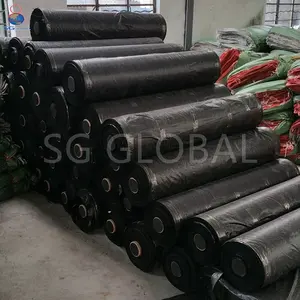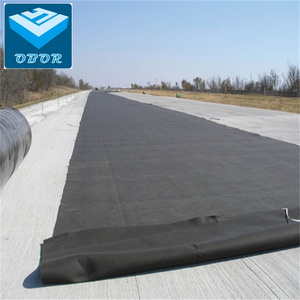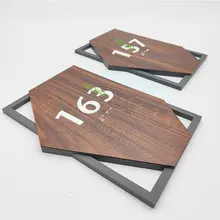What is Geotextile Fabric
Geotextile fabric, a product that falls under the broader category of geosynthetics, is a permeable and durable textile made from synthetic or natural fibers. These fabrics are engineered to improve the stability, strength, and performance of civil engineering structures and infrastructure. Geotextiles are designed for a wide range of applications due to their versatile properties, including high tensile strength, low elongation, and resistance to environmental factors such as UV light, chemicals, and biological degradation.
The primary function of geotextile fabric is to separate, filter, reinforce, or drain materials in a variety of civil works. When used as a separator, it prevents the mixing of different soil types, thereby maintaining the integrity of the structure. As a filter, it prevents the erosion of soil and the passage of fine particles while allowing for the free flow of water. In drainage applications, geotextile fabric acts as a durable filter to collect and remove excess water, which helps in preserving the integrity of roads, retaining walls, and other structures.
Geotextile fabric is also employed for its excellent performance in areas where the is need to reinforce soil. It is an essential material for stabilizing embankments, preventing the lateral spread of soil, and enhancing the load-bearing capacity of weak subsoil. The principles of how geotextile fabric works are deeply rooted in its physical characteristics—such as permeability, which allows water to pass through while maintaining the fabric's structural integrity—and its mechanical properties—such as tensile strength, which resists the stresses that occur in the application environment.
Types of Geotextile Fabric
The variety of geotextile fabrics available on Alibaba.com is vast, designed to meet an array of project requirements:
-
Non-woven Geotextiles: These are engineered to provide strength and filtration capabilities. They are often used for road construction projects where they help in the separation and filtration of fine particles from the base course material.
-
Woven Geotextiles: Characterized by their interlocking warp and weft yarns, woven geotextiles are typically used in applications requiring high tensile strength in both directions. They're commonly used for stabilization in retaining walls and slopes.
-
Composite Geotextiles: These combine two or more types of geotextiles to achieve specific performance criteria such as increased strength, filtration, or both. Their versatility makes them suitable for a wide range of applications including road construction, drainage systems, and environmental protection measures.
-
Needle-punched Geotextiles: These are mechanically bonded fabrics that offer excellent filtration properties and are often used in industrial applications or for erosion control purposes.
-
Thermal Bonded Geotextiles: Created by bonding fibers thermally, these geotextiles provide insulation properties and are used in applications where temperature control is necessary, such as in landfill covers or beneath roads in cold climates.
How to choose Geotextile Fabric
Selecting the right geotextile fabric for a project involves careful consideration of the specific requirements and objectives. Here's how businesses can approach this:
-
Functionality: The primary purpose of geotextiles is to enhance soil stability and prevent erosion. It's important to choose a fabric with the appropriate tensile strength and permeability for the intended function.
-
Material: The choice between polypropylene, polyester, or another material will depend on factors such as durability requirements and exposure conditions. For instance, polyester may be preferred for high-strength applications while polypropylene works better for filtration.
-
Application: The specific application will dictate the type of geotextile needed—whether it's for road construction, reinforcement, or another use.
-
Sustainability: Businesses with an environmental focus may prioritize eco-friendly options such as biodegradable materials or recycled fibers.
About Geotextile Fabric on Alibaba.com
Alibaba.com stands out as a comprehensive marketplace that connects businesses with a vast selection of Geotextile Fabrics suited for diverse commercial needs. With an extensive network of suppliers offering products that span various applications within this category—ranging from non-woven geotextiles for soil stabilization to woven geotextiles for retaining walls—Alibaba.com facilitates finding the right material that meets specific project requirements.
By leveraging Alibaba.com's user-generated content and sophisticated filtering tools, buyers can efficiently narrow down options based on material type, application suitability, feature sets, and even local service locations. This ensures that businesses can access a tailored selection that aligns with their project's unique demands while benefiting from competitive pricing due to Alibaba's global reach.
Furthermore, Alibaba.com's commitment to secure transactions through services like Trade Assurance provides businesses with confidence when making purchases on the platform. The focus on creating a user-friendly experience with mobile buying options and multilingual communication also demonstrates Alibaba.com's dedication to streamlining international trade processes. For businesses seeking high-quality Geotextile Fabrics with reliable after-sale support and convenient procurement options, Alibaba.com offers a solution that caters to their evolving needs on a global scale.
Common FAQs for Geotextile Fabric
What are the primary functions of geotextile fabric in civil engineering applications?
Geotextile fabric serves as a reinforcement material that provides stability to soil or other construction mediums, prevents soil erosion, allows water to pass through, and provides structural support for roads and structures.
How do I determine the right type of geotextile fabric for my project?
The selection of geotextile fabric should be based on the specific needs of your project, such as the required strength, filtration needs, environmental conditions, and longevity of the fabric.
Can geotextile fabric be used for erosion control?
Yes, geotextile fabric is commonly used for erosion control. It is designed to stabilize soil and prevent erosion while allowing water to pass through.
Are there different colors available for geotextile fabric, and do they serve a functional purpose?
Geotextile fabrics come in various colors including white, black, green, and custom colors. The choice of color can depend on aesthetic preference or visibility requirements.
How do I know if a geotextile fabric is environmentally friendly?
Look for geotextile fabrics that are labeled as eco-friendly or made from recycled materials. These features indicate the product has been produced with environmental considerations in mind.
What is the difference between woven and non-woven geotextile fabrics?
Woven geotextile fabrics are made by interlocking threads into a coherent fabric structure which provides strength and filtration properties. Non-woven geotextile fabrics are manufactured from a random arrangement of fibers and are typically used for filtration and stabilization.
Can I get customized geotextile fabric for specific project requirements?
Yes, many suppliers offer project solution capabilities that include customizing geotextile fabric based on size, strength, color, and environmental needs of the project.
What are the advantages of using polypropylene fabric for geotextile applications?
Polypropylene fabric is lightweight, resistant to chemicals and bacteria, and has excellent tensile strength which makes it suitable for a variety of geotextile applications.
How does the strength of a geotextile fabric compare to its weight?
The strength of a geotextile fabric is measured by its tensile strength, which is its ability to resist pulling forces. Fabrics with high tensile strength are typically made from durable materials that can withstand such forces.
Is it possible to obtain a machinery test report for geotextile fabrics?
Obtaining a machinery test report depends on the supplier's capabilities. While some suppliers may provide these reports, others may not have the data available. It is important to clarify this with the supplier before purchasing.
Can I find flame retardant geotextile fabrics?
Flame retardant geotextile fabrics are available and are especially important for environments where there is a risk of fire or high temperatures. These specialized materials are treated with flame retardants during manufacturing.
Are there any after-sales services provided with the purchase of geotextile fabric?
After-sales services vary among suppliers but may include return and replacement policies or onsite support such as installation guidance or training. Confirm with the supplier what services they offer before making a purchase.
How do I choose the right size of geotextile fabric for my project?
Selecting the right size involves considering the dimensions of the area you need to cover or reinforce. Some suppliers may offer standard sizes while others might provide custom cutting services.
What should I consider when choosing a supplier for geotextile fabric on Alibaba.com?
Consider a supplier's experience in your industry, their responsiveness to inquiries, the range of products they offer, and their ability to meet your quantity and delivery timeframe requirements.












































 浙公网安备 33010002000092号
浙公网安备 33010002000092号 浙B2-20120091-4
浙B2-20120091-4